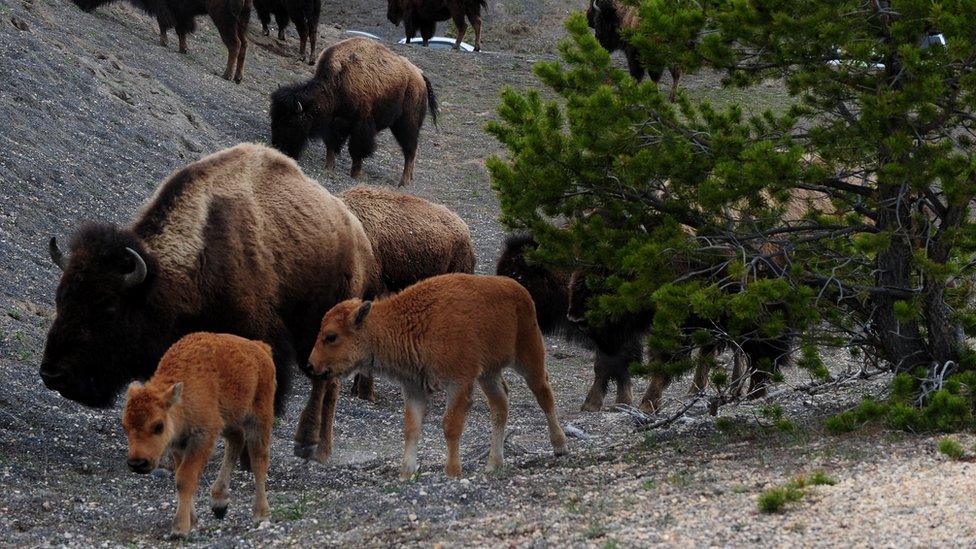Yellowstone National Park in 1871 and today
- Published
After 140 years, the boulders, canyons and geysers of Yellowstone National Park appear to be no worse for wear, according to newly released images.
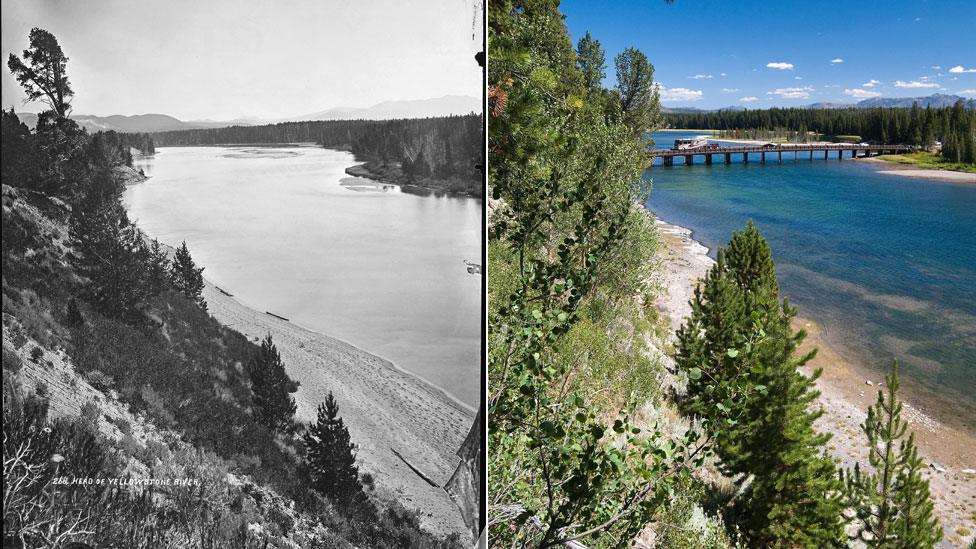
The Fishing Bridge in 1871 and 2012
Photographer William Henry Jackson photographed the Wyoming-based park in 1871, the year before Congress made Yellowstone the first national park in the world.
More than a century later, photographer Brad Boner set out to replicate Jackson's black-and-white photographs.
Some of his pictures will be displayed next to Jackson's this summer at the National Museum of Wildlife Art in Jackson Hole, Wyoming.

Yellowstone National Park in 1871
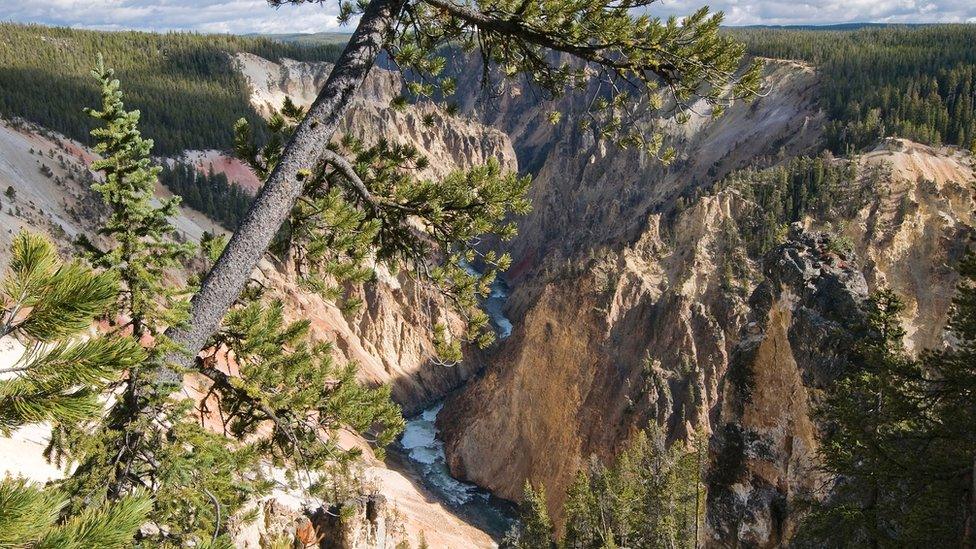
Yellowstone pictured in 2013
The top picture on this page, The Fishing Bridge, suggests the only change in those 14 decades is a man-made one - the bridge itself, says David Quammen, a contributing writer for National Geographic who wrote the magazine's May 2016 issue on Yellowstone,, external.
That is because the geological features of Yellowstone - the rocks and the geysers and the landscape - are still very much the same, he adds.
What has changed is the way people have populated and developed the park in that time, he says, and the photographs do not tell the whole story.

Jackson explored Yellowstone using federal cash and he carried his equipment on mules
Most people do not realise Yellowstone began as a tourist attraction and only later became a wildlife refuge, he says.
"Yellowstone has changed vastly - in some ways for better, in some ways for the worse," says Mr Quammen. "Those changes mostly involve ecological changes."
Animal populations have prospered, he says, with more wolves in the park now than at the time when Jackson took his camera and headed off on that expedition.
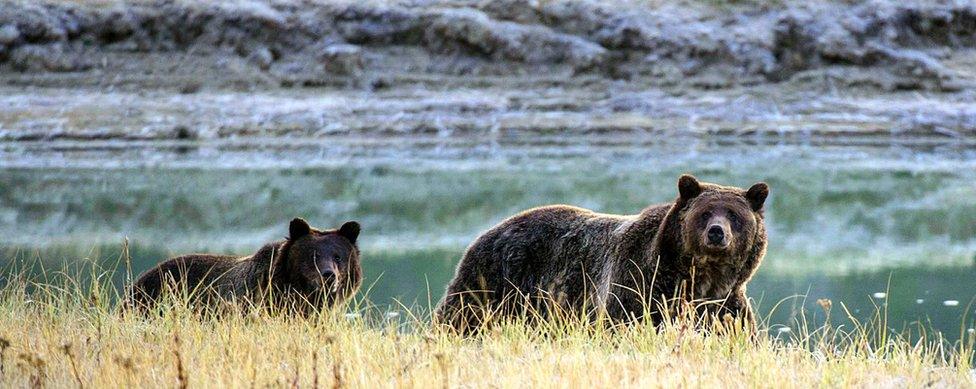
The wildlife is better managed now, says Mr Quammen
As the park has become an increasingly popular tourist destination, there have been huge changes in infrastructure, says Mr Quammen, like the bridge, roads, hotels and tourist shops.
But he thinks the people who now run the park are sensitive to the fact that as visitor numbers increase, the scenic resources are put under strain.
Limits will have to be placed on how many people can visit, he says. Last year, four million people came to Yellowstone.

The Grotto Geyser as pictured in 1871
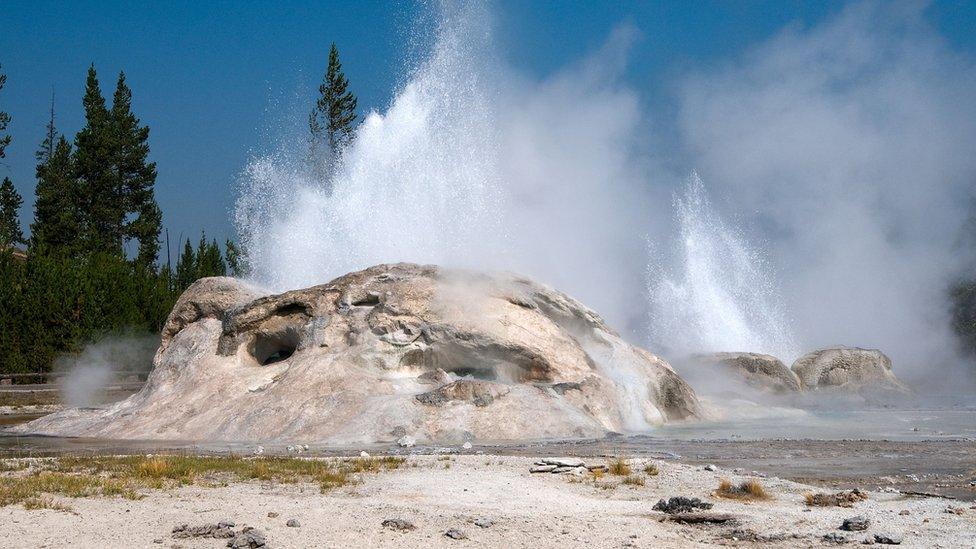
The Grotto Geyser pictured in 2012
"The real changes in Yellowstone are off-screen - it has become a wildlife refuge, and it is filled with people in cars and hotels, and these photos don't show that," he says.
Mr Boner has been talking about his techniques. He says he walked around the park holding his photos up to the horizon, in order to replicate Jackson.
"The whole point of creating Yellowstone was to give future generations an opportunity to experience these special places," he told the AP news agency.
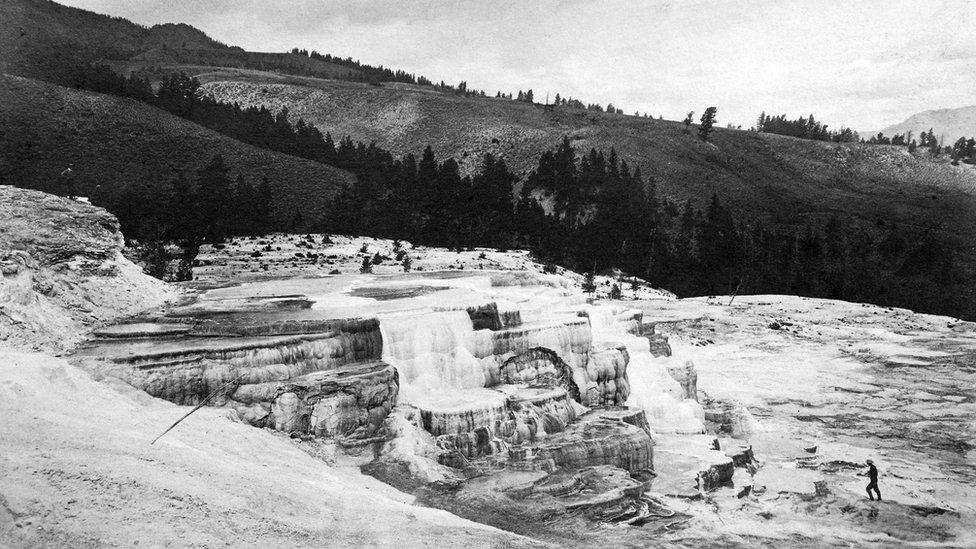
Minerva Terrace pictured in 1871

Minerva Terrace pictured in 2013
"When I look at these pictures, I take a great deal of comfort in knowing that my kids are going to be able to go to a lot of these places and see the same thing."
Things would just "click and fall into place" when he was trying to find the right frame, he says.
"All of a sudden, you're looking at the landscape that is in the photograph that I was holding, that Jackson took. There were definitely times I got goose bumps."
Reporting by Ashley Gold
- Published23 July 2015
